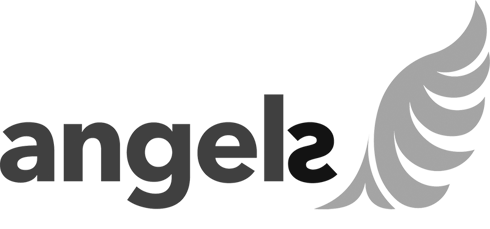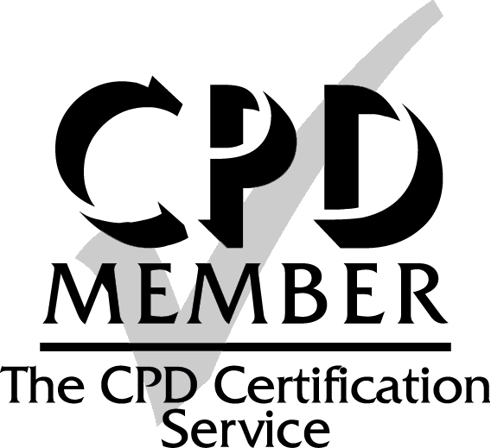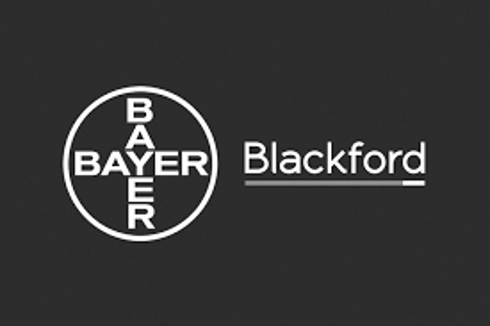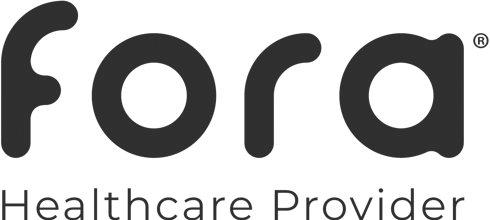Let us help you
Choose a section below to find more information
Normal
Normal
Brainomix 360 Stroke is the integrated stroke imaging solution for acute stroke pathways. It includes decision support tools for the analysis of CT, CT Angiography (CTA), CT Perfusion (CTP) and MRI images, via e-ASPECTS, e-CTA and e-CTP.
e-ASPECTS can detect and measure both Large Vessel Occlusion (LVO) and hyperdense volumes (which may indicate bleeding), automatically assess infarct volume and assess ASPECTS score in non-contrast CT images, with overlaid heatmaps for visual aid.
e-CTA is the CTA processing module in e-Stroke, which automates and standardizes the assessment of collaterals on acute stroke patient brain CTA scans. You can use e-CTA to estimate the status of collaterals and to compute the CTA Collateral Score (CTA-CS). e-CTA will also provide an indication of the acquisition phase of the CTA scan, to help ensure quality control and standardized interpretation.
The e-CTP module is designed to provide decision support for clinicians when assessing CT Perfusion results, generating summary maps with improved visualization quality to facilitate fast interpretation.
The individual modules, e-ASPECTS, e-CTA, and e-CTP, can be licensed separately or as part of a package. If you only want to use Brainomix 360 Stroke on non-contrast CT images, for example, then it is only necessary to license the e-ASPECTS module. In all cases, you will have access to the integrated web browser user interface, DICOM results sent automatically to your existing PACS or other radiology systems, and email result notifications.
Existing e-ASPECTS installations will be upgraded to Brainomix 360 Stroke, with e-ASPECTS as a licensed module, free of charge. It will be possible to enable additional modules, including e-CTA and e-CTP, following the upgrade. Ask your Brainomix contact point, or email support@brainomix.com, for more details.
Yes – e-ASPECTS, e-CTA, and e-CTP are all CE marked class IIa medical devices, intended for use as decision support tools for analysis of acute ischemic stroke patient brain CT, CTA, and CTP scans, respectively.
The assessment of the brain CT scan of an acute ischemic stroke patient is a crucial step towards treatment decisions. Not all stroke physicians are equally confident to interpret CT scans, since early ischemic changes are subtle and may be hard to detect, even if the damage is already present in several ASPECTS regions. e-ASPECTS delivers a fast, robust and standardized assessment of CT scans of acute ischemic stroke patients on expert level, serving as an expert second opinion for the physician’s interpretation, thereby introducing confidence, consistency and speed into the physician’s clinical decision making.
A multi-center clinical study was carried out by Anglia Ruskin Clinical Trials Unit (Nagel, Sinha, et al., IJ Stroke, 2017), comparing the performance of e-ASPECTS to expert scorers on baseline CT scans. The ground truth was independently set based on what was visible on both the baseline scans and follow-up CT scans together with clinical information. The study showed that on average e-ASPECTS is statistically non-inferior to experts at performing ASPECTS scoring on brain CT scans of acute ischemic stroke patients.
Like a human expert neuroradiologist, the software is not 100% accurate and on occasion, an ischemic region may be missed, or a healthy region may be falsely detected as being ischemic. e-ASPECTS is licensed as a decision support tool to complement the interpretation of the brain CT scans by the physician, and users should interpret the results using their own expertise to decide on an ASPECTS score.
Yes – e-ASPECTS will estimate the volume, in ml, of ischemia based on the highlighting of ischemic signs. This quantification is fully automatic, providing additional information that would be difficult or impossible to efficiently compute using manual methods.
Yes – e-ASPECTS will indicate the presence of non-acute ischemia visually, by highlighting regions with significant hypodensity in the CT scan in a different way (hatched orange shading) to the highlighting of the acute ischemic signs (solid red shading). The volume of non-acute ischemia can also be estimated. Note that ASPECTS points are not subtracted for regions containing only non-acute ischemia (without acute ischemia). Therefore, a scan containing only non-acute ischemia would receive an ASPECTS score of 10.
Yes – e-ASPECTS includes a manual editing feature via the web browser user interface, which allows clinicians to review the automated e-ASPECTS score and select or deselect ASPECTS regions to determine their own result. This result can then be published to other users via email notifications and DICOM (PACS) results, in addition to being viewable in the web browser user interface. Manually adjusted results are clearly labelled as such, to distinguish them from automated e-ASPECTS results.
No – e-ASPECTS only assesses ischemic damage within the MCA territory, which accounts for the overwhelming majority of all strokes.
e-ASPECTS automatically highlights and measures the volume of hyperdensities, which may be indicative of blood.
No – e-ASPECTS is only indicated for use on acute ischemic stroke patients. Using e-ASPECTS on non-stroke patients may lead to processing errors or meaningless / incorrect results.
The CTA-CS is a scale from 0 to 3, where 0 represents no collaterals in the area affected by the stroke, and 3 indicates excellent collaterals (Tan et al., AJNR, 2009). There is nowadays significant evidence that the presence of good collateral supply is associated with better clinical outcomes in patients with acute stroke due to large vessel occlusions.
e-CTA is designed for use on brain CTA scans of acute ICA or MCA stroke patients. It assesses collaterals in the MCA territory, and can automatically detect large vessel occlusions (LVOs).
e-CTA has been validated with a dataset of both single-phase and multi-phase CTA scans from numerous sites, and it is intended that you will be able to continue using your hospital’s existing CTA protocol with the software. e-CTA is also capable of automatically detecting large vessel occlusions (LVOs), a key indicator of eligibility for mechanical thrombectomy.
Yes – in a similar way to e-ASPECTS, the e-CTA automated result can be manually edited via the web browser user interface, and published to all result formats.
The assessment of the brain CT perfusion of an acute ischemic stroke patient is a crucial step towards treatment decisions. e-CTP delivers a robust, reliable and standardized assessment of mismatch estimation from CT perfusion scans of acute ischemic stroke patients, thereby introducing confidence, consistency and speed into the physician’s clinical decision making.
The e-CTP report, automatically generated in around 1 minute, includes the key information to help the stroke team with the treatment decision: Penumbra Volume, Core Volume, and Mismatch Ratio.
Brainomix 360 Stroke is provided as a managed appliance running on either virtualized or physical hardware. Typically, a virtual machine server is provisioned by the hospital IT department, and Brainomix engineers will work with hospital technicians to install Brainomix 360 Stroke software and connect it via the DICOM network protocol to the CT scanners and PACS systems.
Typically, thin-slice CT, CTA, or CTP data is sent from the CT scanner workstation to Brainomix 360 Stroke by the radiographer, with a suitable head / stroke protocol set up on the workstation to streamline the process. The Brainomix 360 Stroke server will process the scan and send results approximately 1-2 minutes later to the PACS and via pseudonymized email notifications. Results can also be viewed with an iPad or a web browser on a computer connected to the hospital network (either on-site, or remotely via any existing hospital VPN solutions, e.g. Citrix), or on the Brainomix 360 Stroke Mobile App.
New or existing CT, CTA, and CTP stroke protocols can be used, with protocol recommendations for each modality available from Brainomix. Brainomix engineers will work with the hospital staff to ensure that the scanning protocol is appropriate.
Yes – Brainomix 360 Stroke supports all the major scanner and PACS manufacturers. Use of the standard DICOM network protocol for communication means that results should be easy to view in the existing hospital PACS and other DICOM-compliant radiology systems. Brainomix engineers will work with the hospital staff to ensure that these connections are tested prior to the system going live.
Typically, results will be generated within 1-2 minutes of the scan being sent to Brainomix 360 Stroke. Results will then be available immediately in the web browser user interface (available on iPads and computers connected to the hospital network), and soon afterwards on PACS and via email notifications (typically within a few seconds, depending on network speed). Results may also be viewed on the Brainomix 360 Stroke Mobile App.
Yes – Brainomix 360 Stroke results can be accessed outside the hospital via email notifications and via the web browser user interface. To ensure the security of patient data, email notifications contain pseudonymized results. These can be used on devices such as mobile phones and laptops with access to the hospital email system. If you have an existing remote access solution (VPN, Citrix etc.) then you can use this to access Brainomix 360 Stroke web browser user interface from outside the hospital, providing full access to results.
Confidential patient data are stored on Brainomix 360 Stroke server inside the hospital, and not transmitted externally. Access to Brainomix 360 Stroke server is limited to secure channels, even from within the hospital network. Brainomix 360 Stroke results transmitted via email notifications are pseudonymized, with only the patient ID and scan time linking the results to the records stored within hospital systems.
It is possible that scan artifacts such as motion streak artifacts, excessive beam hardening artifacts, or very large areas of non-acute ischemia, will prevent Brainomix 360 Stroke modules from successfully processing and scoring the scan. In general, if an expert cannot read the scan, the software may also fail to produce a result. When this occurs, a notification of failure will be generated.
All clinical users will be invited to a group presentation about best practices in stroke image interpretation and the clinical utility of Brainomix 360 Stroke, followed by hands-on training in small groups, on-site at the hospital. In-application help is also provided with the browser-based Brainomix 360 Stroke user interface.
If you would like to request additional training, this can be arranged (additional costs may be incurred for extra training). Please get in touch with your primary Brainomix contact, or email support@brainomix.com, to arrange this.
The site will have been provided with a Service Level Agreement (SLA). This describes the support provided by Brainomix, via telephone or email, 24/7. Simply call +44 1865 582740 at anytime, or email support@brainomix.com to notify Brainomix engineers of any problems you are experiencing.
The first step in the support process is for Brainomix engineers to try to rectify the problem remotely. However, if this is not possible, we will schedule an on-site visit in conjunction with the lead user and hospital technicians.
The Brainomix 360 Stroke software is typically updated once or twice a year.
Updates can include image scoring improvements, better visual output, improved device support, user interface improvements, security updates, and general fixes. New modules may also be made available over time.
When a new version update is available, support staff will contact the lead user to schedule the update. Once this is approved, support engineers will remotely update Brainomix 360 Stroke service and test that the update was successful together with the hospital technicians. The update process will include Brainomix 360 Stroke service being unavailable for a short period (typically 1 hour).
Our Partners











